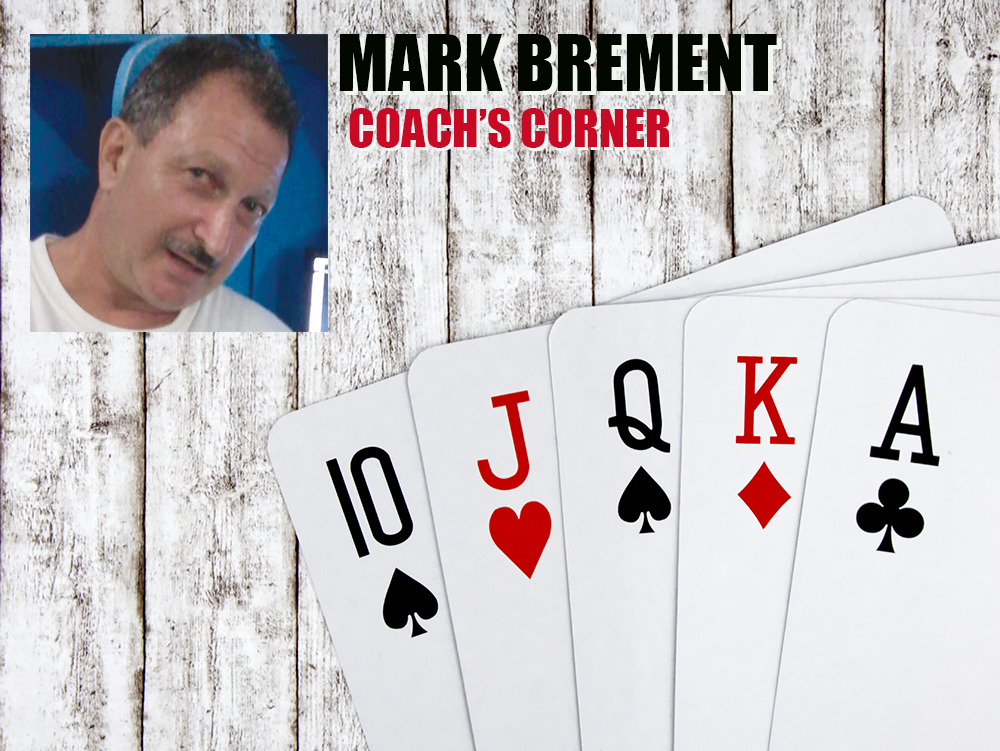I beg you to take the time to review Parts 1 and 2 from the past two issues. Please!
This column focuses on the middle stage of a nine-player online sit-and-go and we have accomplished Goal 1. Chip up to 1,900 or more. Let’s do a partial review of the past two columns before we move in to our knuckle-down strategy.
We’re using this SNG format to improve our multitable tournament results. We’re not thinking about hourly rate and such. We’re playing only one game. Our goal is to get into the money. We are thinking big: $100K-plus cashes in a big multiday live event.
We’re catching as many flops as reasonably possible in the early stage and taking advantage of our opponents’ tight play. And, yes, we have chipped up as prescribed. But again, our No. 1 goal is to make the money, which is first, second and third place at a better than 40 percent rate.
Invariably, with today’s strong tight-aggressive lineup, there will be seven players remaining when we hit the 50-100 blind range (middle stage). It’s time to change gears, to move from very loose to very tight. The good news is we have a significant edge. There’s an extra 3K chips in play because two players are eliminated. We have an above-average stack and there are three short stacks (fewer than 1K chips) that are feeling pressure to play. A few points to embrace:
Do not feel like it’s our job to knock out players. Let our co-players do the dirty work when possible.
We should have keen notes on opponents, thereby having good reads on their range of play. This helps us avoid marginal situations. Our opponents have us pegged as a loose player, a.k.a. donkey, fish, etc. They’re letting their analysis programs do their thinking for them and observe that we’re way loose. They’re unaware there’s a fox in the hen house.
We need to accept the reality that our change of gears will take us to the bubble an extraordinarily high percentage of the time. But because we’re playing selective, tight, about half of the time we’ll find ourselves at the bubble with a less than optimal stack. The other half, we will be taking a strong stack to the bubble with us.
In the next columns, we’ll delve into one-bubble play, possibly the most important factor of long-term success, again changing gears after we make the money and examining how to gain a larger percentage of first-place finishes and explore some game theory. In short, when in the middle stage (50-100 and 75-150 blinds), we can’t afford a slight error where we dump off chips. We must play tight.
— Mark Brement has spent 15 years teaching and coaching all facets of poker, including at Pima Community College. Email him at pokermoses@phxpoker.com.




